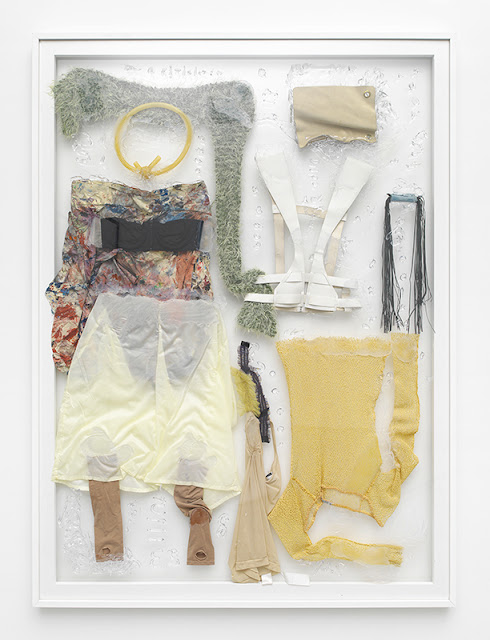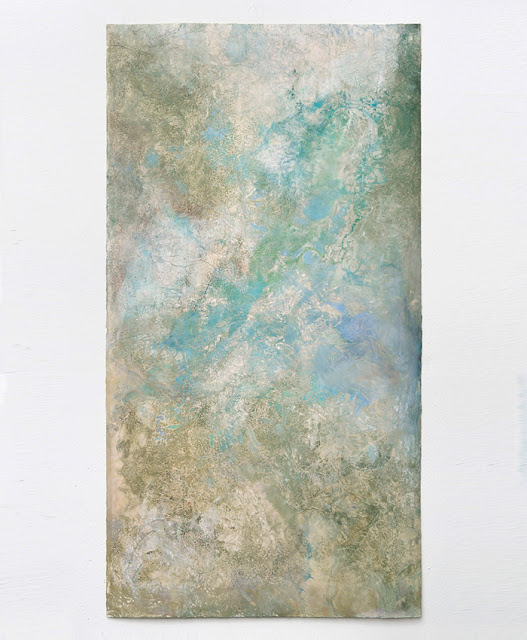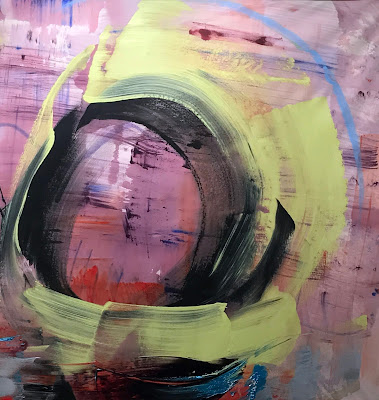DONNA HUANCA: ECHO IMPLANT

Crush Part 2 , 2015. Clothing, leather, silicone, Plexiglas, wood frame; 70 x 51 x 2 inches Three years ago , on a cold rainy winter day, I chanced upon a closing party for Donna Huanca, to whom I was quickly introduced. As we exchanged pleasantries I glanced around the gallery, which was hung to the rafters with the various details of her work. There were entire outfits of clothing pressed between panes of glass and framed; vaguely biomorphic masses that resembles torsos as tree stumps or compost cubes; mostly nude models with their bodies painted standing like statues on a balcony above or upon a shelf or pedestal upon the wall, staring blankly over the crowd; clearly Huanca desired to bridge the gap between introspection and spectacle. Cave Woman , 2015. Makeup on wool; 59 x 37 x 1 ½ inches I recall the space of the Joe Sheftel Gallery. Tall and narrow, it gave the impression of being a marginal space, like a stage with...


